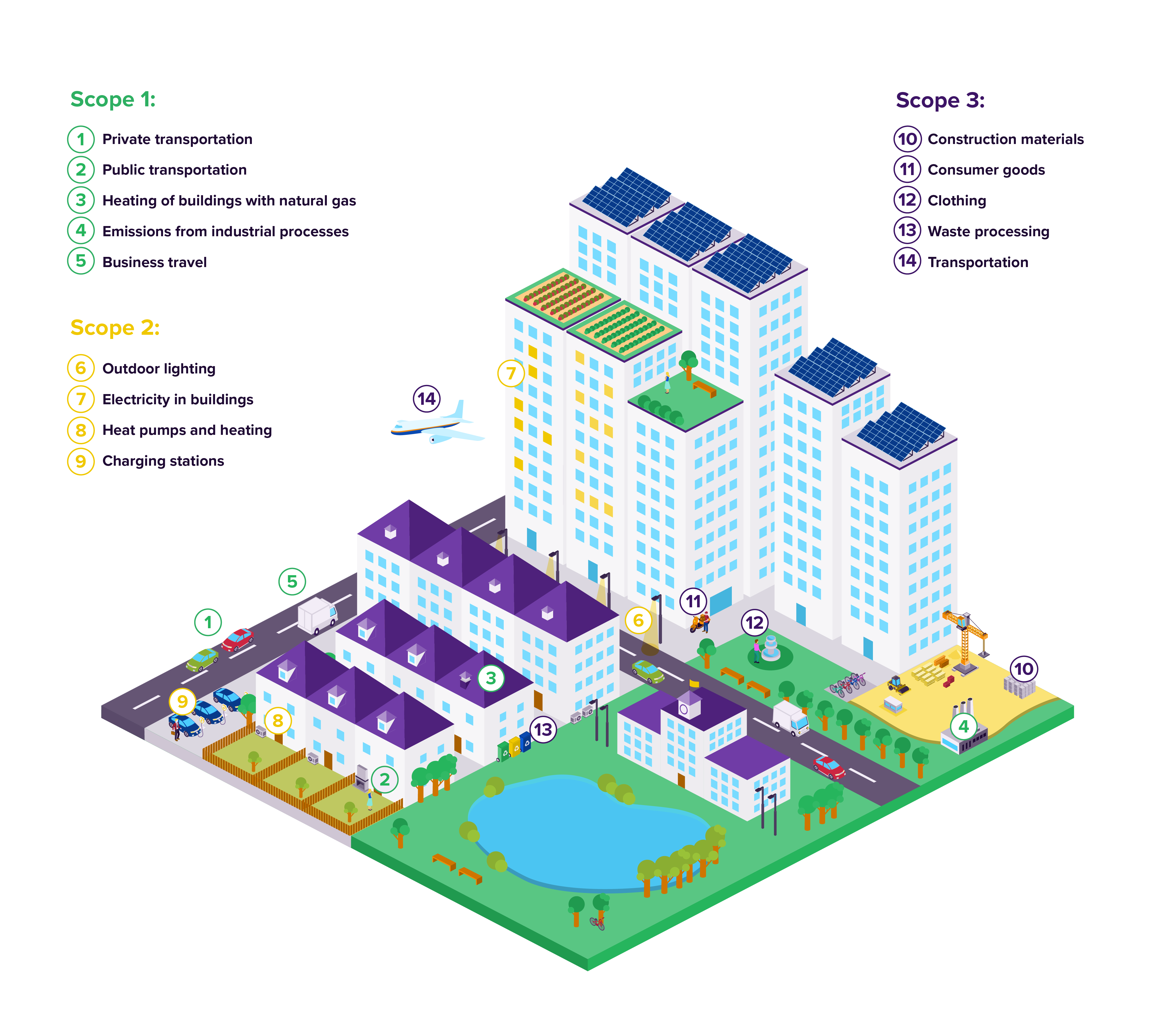Why material flows matter: How cities can reduce Scope 3 emissions and lead the circular economy
The traditional “take-make-waste” model, dominant in urban economies, accelerates resource extraction and waste generation. Understanding material flows is essential not only for better waste management, but also for addressing the root causes of overconsumption and unsustainable production. Although many emissions occur outside city boundaries, cities can influence supply chains and consumption patterns through local policy, procurement, and regulation.
Urban lifestyles, especially in high-income areas, drive a high demand for materials such as steel, cement, textiles and electronics, often resulting in high "embodied emissions." These are emissions generated during the production and transport of goods consumed in cities, but emitted elsewhere. In Amsterdam, for example, 78% of the city’s CO₂ emissions are linked to material consumption. Ignoring these supply chain-related (Scope 3) emissions means overlooking the majority of a city’s climate impact. Addressing urban material flows allows cities to significantly reduce their contribution to climate change (but also to pollution, and biodiversity loss.
Understanding material flows is also key to building urban resilience. The COVID-19 pandemic and global conflicts have exposed vulnerabilities in global supply chains. Cities that rely heavily on imported construction materials, food, or electronics are especially exposed to disruptions. By mapping dependencies, cities can identify risks and shift toward more circular, local, and resilient material systems. Urban mining, reuse, and recycling can help buffer cities from supply shocks and price volatility.
Scope 3 emissions: A local responsibility
Although Scope 3 emissions occur outside city jurisdictions, they are a direct result of local consumption and occur within their circle of influence. Cities have tools to influence emissions through public procurement, sustainable building codes, economic incentives, and education.
There is also increasing regulatory and ethical pressure. The EU’s Circular Economy Action Plan and national targets, such as the Netherlands’ goal of full circularity by 2050, require local involvement. Following the Urgenda ruling, the legal duty of care to protect citizens from climate risks may also apply to local governments, requiring them to take stronger climate action. This includes addressing Scope 3 emissions, as part of their responsibility to reduce the broader environmental impact.

-01.png)





